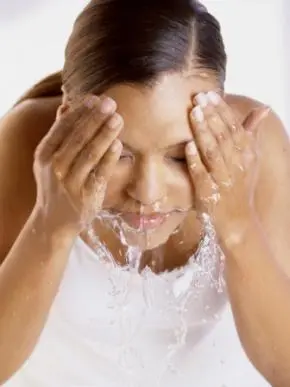Folder : Our daily beauty routines
Why and how should you exfoliate your face? Good habits to know and steps to take: find out all you need to know in this article.
Exfoliation: what is it exactly?
Our body skin regenerates all the time: cells die and are replaced by new cells. Day after day, every minute, our skin is renewed. This process would be perfect if dead cells did not remain attached to the surface of the skin. To clear it, our skin needs a little boost: ‘exfoliation’ or a ‘scrub’, that is, treatment which consists of elimination by rubbing off the dead cells at the surface of the skin.
Why should you exfoliate your face?
Everyone would like to look good: a radiant complexion, clear, visibly softer, ‘new’ skin. Actually, dead cells at the surface of the skin dull the complexion, almost like a sad grey veil! If this veil is removed, a more beautiful skin and a more radiant complexion is rediscovered. This is why your face needs exfoliation: the removal of dead cells at the surface of the skin helps awaken the complexion. The skin immediately appears to be clearer, gentler, more regular and more beautiful.
Scrubbing attends to other non-negligeable interests: it helps unclog the pores and thus supports the drainage of sebum. It is therefore a step that helps fight against small skin irregularities that can cause unsightly spots and blackheads. Finally, exfoliating your face stimulates cellular regeneration which tends to slow down as the years go by. Scrubbing helps your face breathe better.
Exfoliate my face: yes, but how?
The skin on your face is fragile, it should not be mistreated. On the contrary, pamper it with the appropriate treatment and use well-selected products.
There are two types of exfoliants: mechanical (achieved by rubbing) and chemicals (achieved by applying a product that dissolves impurities). We will concentrate here on mechanical scrubs: lotions or exfoliating gels containing small abrasive balls that are activated by rubbing.
Choose a scrub that is especially designed for the face: do not use an exfoliant for the body, as it is too abrasive for your face, which is more delicate.
Stages of good exfoliation
Before starting to exfoliate your face, bear in mind that the aim is to remove dead cells on the surface of the skin and not to damage your skin.
Wet your skin: this will help make rubbing less aggressive.
Put a dab of exfoliating product on the tip of your fingers and start your face treatment. Make sure you rub your skin gently and not roughly, make light circular movements on the area you wish to treat and avoid the delicate area around your eyes. Prioritise the T-zone (nose, forehead, and chin): it’s the oily part.
Be quick: the treatment should not be on for a long time, to avoid cracking the skin.
Rinse the skin preferably with cold water to tighten the pores.
Moisturise! Once facial exfoliation has been completed, do not stop as you have taken such good measures: this is only part of the routine for a cleaner and more beautiful skin. Your skin is momentarily fragile, because it is deprived of its natural protective barrier: the hydrolipidic film, of which one of the functions is to maintain a good level of skin moisturisation, thus helping attain gentleness and suppleness. Because you have just removed this protective film, protect your skin with a moisturising lotion for your face which must be suited to your skin type: this will help your skin to recover its softness and elasticity
A scrub, yes … but how often?
On average, a daily scrub is advisable for all skin types, but this is only on average. Those with sensitive skin should be content with less frequent exfoliation. They should choose a gentle exfoliator which is particularly suited to delicate skin. Those with oily skin can do a scrub two to three times a week in order to rid the pores of excess sebum.
And finally … the accessory you should avoid
When doing a scrub, do not use a wash cloth: it will absorb the product and make it less efficient.



